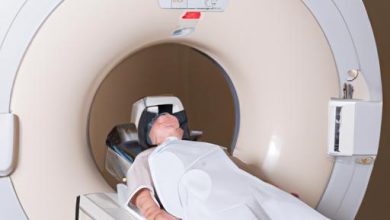How Long Does It Take to Be a Radiology Tech?
Radiology technology is a fascinating career path that involves utilizing advanced imaging techniques to assist in diagnosing medical conditions. As a radiology tech, you play a crucial role in helping patients receive accurate diagnoses and treatment plans. However, embarking on this career journey requires a clear understanding of the time commitment involved in becoming a radiology tech.
It’s essential to comprehend the educational and clinical training requirements necessary to excel in this field. By delving into the intricacies of the radiology technology profession, you gain insight into the dedication and perseverance needed to thrive in this dynamic industry. Let’s explore the journey to becoming a radiology tech and unravel the timeline needed to achieve this rewarding career goal.
Educational Requirements
Accredited Radiology Technology Programs
Embarking on a career as a radiology tech necessitates enrolling in accredited radiology technology programs. These programs provide comprehensive training and education in various imaging techniques, radiographic positioning, radiation safety, and patient care. By selecting an accredited program, you ensure that you receive the necessary knowledge and skills to excel in the field of radiology technology.
Prerequisites for Admission
Before enrolling in a radiology technology program, it’s crucial to meet specific prerequisites for admission. These prerequisites may include a high school diploma or equivalent, completion of prerequisite courses such as anatomy and physiology, and passing entrance exams. Adhering to these admission requirements sets the foundation for a successful academic journey towards becoming a radiology tech.
Curriculum Overview
The curriculum of radiology technology programs typically covers a wide range of topics, including radiographic procedures, medical terminology, image evaluation, and patient care techniques. Students engage in hands-on learning experiences and clinical rotations to apply theoretical knowledge in real-world healthcare settings. The comprehensive curriculum equips aspiring radiology techs with the necessary skills and expertise to thrive in this dynamic field.
Clinical Training
Hands-on Experience in a Healthcare Setting
To excel as a radiology tech, hands-on experience in a healthcare environment is invaluable. This practical training allows you to apply theoretical knowledge to real-world scenarios, honing your skills and enhancing your expertise. Working alongside experienced professionals in a clinical setting provides invaluable insights into the daily responsibilities and challenges faced by radiology techs. Through hands-on experience, you develop the confidence and proficiency required to deliver exceptional patient care and accurate diagnostic results.
Internship Requirements
Internships are a vital component of the clinical training process for aspiring radiology techs. These structured programs offer a hands-on learning experience in a professional healthcare setting, allowing you to work directly with patients, radiologists, and other healthcare professionals. Internship requirements vary by program but typically involve a specified number of hours spent gaining practical experience in performing radiographic procedures, interacting with patients, and mastering imaging equipment. Successfully completing an internship demonstrates your readiness to transition from student to professional in the field of radiology technology.
Supervised Practice Hours
Supervised practice hours play a crucial role in shaping your skills and competencies as a radiology tech. Under the guidance of experienced mentors, you have the opportunity to refine your technique, improve your communication skills, and enhance your ability to produce high-quality diagnostic images. These supervised practice hours ensure that you meet the standards of proficiency and professionalism required in the field of radiology technology. By investing time and effort into supervised practice, you lay a solid foundation for a successful career as a radiology tech.
Certification and Licensing
National Certification Exams
To become a certified radiology tech, you must successfully pass national certification exams accredited by organizations such as the American Registry of Radiologic Technologists (ARRT). These exams assess your knowledge and skills in various areas of radiology technology, ensuring that you meet the industry’s standards for competency and professionalism. By achieving certification, you demonstrate your commitment to excellence in the field and enhance your credibility as a radiology tech.
State Licensing Requirements
In addition to national certification, many states require radiology techs to obtain a state license to practice legally. State licensing requirements vary, so it’s crucial to research the specific mandates in your state to ensure compliance. Licensing typically involves submitting an application, completing educational prerequisites, and passing state-specific exams. By meeting these requirements, you validate your qualifications as a radiology tech and gain the legal authorization to work in your chosen state.
Continuing Education Obligations
As a radiology tech, staying current with advancements in technology and best practices is vital for delivering high-quality patient care. Continuing education requirements mandate that radiology techs participate in ongoing training to maintain their certification and licensing. These educational opportunities not only enhance your skills and knowledge but also demonstrate your commitment to professional growth and development. By fulfilling continuing education obligations, you uphold the standards of excellence in radiology technology and ensure that you provide optimal care to patients.
Timeframe to Become a Radiology Tech
Average Duration of Educational Program
Embarking on the journey to become a radiology tech involves enrolling in an accredited radiology technology program. These programs typically range from 1 to 4 years, depending on the level of degree pursued. A certificate or associate’s degree program may take around 1 to 2 years to complete, while a bachelor’s degree program can span 3 to 4 years. Understanding the duration of the educational program is crucial in planning your career trajectory as a radiology tech.
Length of Clinical Training
After completing the educational component, radiology techs must undergo hands-on clinical training in a healthcare setting. This practical experience is essential for honing skills and gaining real-world expertise in conducting imaging procedures. Clinical training can vary in length but generally lasts between 1 to 2 years, depending on the program’s requirements. Immersing yourself in clinical practice allows you to apply theoretical knowledge to actual patient care scenarios, preparing you for a successful career in radiology technology.
Time Needed to Pass Certification Exams and Obtain Licensure
Upon completing the educational program and clinical training, aspiring radiology techs must pass national certification exams to demonstrate their competency in the field. Additionally, obtaining state licensure is necessary to practice as a radiology tech legally. The time needed to prepare for and pass certification exams can vary, but dedication and commitment are key to achieving success in these assessments. Acquiring licensure further solidifies your qualifications and opens up opportunities for career advancement in the field of radiology technology.
Conclusion
Understanding the time investment required to become a radiology tech is crucial for aspiring individuals looking to pursue this rewarding career path. From completing accredited educational programs to gaining hands-on clinical experience and obtaining certification and licensure, the journey to becoming a radiology tech demands dedication and commitment.
As you embark on this exciting career path, remember that the road to becoming a radiology tech is paved with opportunities for growth and advancement. By staying informed, honing your skills, and continuously seeking professional development, you can establish yourself as a competent and respected radiology tech. Remember, the journey may be challenging, but the rewards of making a difference in patients’ lives are truly priceless. equipment.giadinh.tv is here to support you every step of the way.
Conclusion: So above is the How Long Does It Take to Be a Radiology Tech? article. Hopefully with this article you can help you in life, always follow and read our good articles on the website: equipment.giadinh.tv




